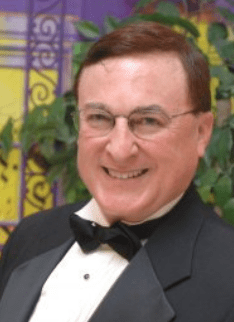
In anticipation of what will now be the uncrewed return of Boeing’s Starliner spacecraft from the International Space Station (ISS), NASA held a pre-departure briefing on Wednesday, September 4, from its Johnson Space Center in Houston. The briefing featured Steve Stich, NASA’s Commercial Crew Program manager, Dana Weigel, manager of the ISS at NASA’s Johnson Space Center, and ISS Flight Director Anthony Vareha. The officials shared critical updates and a refined timeline for Starliner’s return mission to Earth, which is scheduled to take place on Friday, September 6.
Revised Timeline for Starliner’s Return
NASA’s Steve Stich outlined the step-by-step process for Starliner’s return to Earth. The sequence of events will begin approximately 45 minutes before the spacecraft undocks from the ISS, when a “go/no-go” poll will be conducted, factoring in conditions at the designated landing site in White Sands, New Mexico. Once cleared, undocking is expected at 6:04 p.m. EDT, with springs instantly pushing the spacecraft away from the ISS.
A short thruster burn will follow 30 seconds later, designed to further separate Starliner from the ISS. At approximately 11:17 p.m. EDT, the spacecraft will execute a de-orbit burn lasting around 60 seconds, setting it on course for re-entry. The spacecraft is expected to touch down at the White Sands landing site at 12:04 a.m. EDT on Saturday, September 7, roughly six hours after undocking.
While this return mission will be uncrewed, NASA says it will still gather critical data simulating a crewed flight. The spacecraft is outfitted with accelerometers and sensors in the seats that will measure forces akin to those experienced by astronauts during re-entry and landing. Additionally, the interior of Starliner will record environmental data, such as pressure and temperature fluctuations, which will be vital for evaluating the vehicle’s performance and safety.
NASA has scheduled a post-landing press conference to take place at approximately 1:30 a.m. EDT, offering a chance to assess the spacecraft’s return and discuss any pertinent findings from the mission.
Backup Dates in Case of Weather Delays
Given the inherent unpredictability of New Mexico’s weather, NASA has prepared contingency dates in case poor weather—such as strong winds or rain—interferes with the planned landing. Backup opportunities are spaced four days apart, providing flexibility to ensure safe touchdown conditions.
Suit Compatibility
An interesting logistical challenge has emerged as the Starliner saga has unfolded : the space suits designed for astronauts aboard the SpaceX Crew Dragon are different form those used by Starliner astronauts. The Boeing suits that were worn by NASA astronauts Butch Wilmore and Suni Williams during their ride up to the ISS will return to Earth with the uncrewed Starliner. They are of little use for Wilmore and William’s return trip next year, as the Boeing suits are incompatible with SpaceX spacecraft.
To address this, NASA has provided Wilmore and Williams with SpaceX suits for their planned return to Earth aboard the Crew-9 mission, scheduled for late February or early March 2025. Williams has already tested one of the SpaceX suits currently aboard the ISS, confirming a proper fit. Meanwhile, a second suit will be sent up to the ISS on a future Crew-9 resupply mission for Wilmore.
NASA also confirmed that, in case of an emergency, Wilmore and Williams could be evacuated aboard the Crew 8 spacecraft, which is for now docked at the ISS. But, because the Crew -8 ship is configured for only four, they would have to ride in Crew-8’s cargo pallet area. Additionally, at least one of them would be riding without a space suit if anything happened before the Crew-9 mission arrives with extra suits.

Photo: Charles Boyer / Florida Media Now
Starliner Mission and Crew’s Accomplishments
Since their arrival aboard the ISS, astronauts Butch Wilmore and Suni Williams have conducted at least 42 scientific experiments, dedicating over 100 hours to research. Their work spans a wide range of disciplines, helping to advance knowledge in areas such as biology, physics, and space technologies. Additionally, they have maintained a rigorous schedule of physical fitness, incorporating resistance training and cardio exercises to counteract the physical toll of extended periods in microgravity.
Both astronauts are reported to be in excellent health and spirits, frequently staying in touch with their families through NASA’s robust communication network. Their stay aboard the ISS will continue until their return with Crew-9 next year.
Thruster Concerns and Starliner Certification Delay
A potential concern involves one of Starliner’s thrusters, which NASA suspects may not be fully operational. Fortunately, the spacecraft is equipped with 21 other functioning thrusters, providing redundancy and ensuring Starliner can safely complete its mission.
NASA also discussed Starliner’s future certification plans. Originally, Boeing had planned for another Starliner mission in February 2025. However, due to technical issues and delays, that mission has now been postponed to August 2025. This additional time will allow NASA and Boeing to address any outstanding concerns, ensure that Starliner meets all necessary safety requirements, and improve its operational capabilities for future crewed missions.
The Road Ahead for Boeing and NASA
As Boeing and NASA continue to collaborate on refining the Starliner program, the upcoming uncrewed return will serve as a critical milestone. While the spacecraft’s journey back to Earth lacks astronauts on board, it represents a significant test of Starliner’s systems, readiness, and overall capability. The data gathered from this mission will inform future crewed flights, solidifying Starliner’s place as a key player in NASA’s commercial spaceflight program.
With an eye toward 2025 and beyond, Boeing and NASA are working diligently to ensure that Starliner can eventually operate as a reliable transportation system for astronauts. Despite the delays and challenges, the program remains an integral part of NASA’s broader vision for commercial partnerships and the future of human space exploration.




Pingback: NASA Reveals Details on Upcoming Starliner Return from ISS | TalkOfTitusville.com